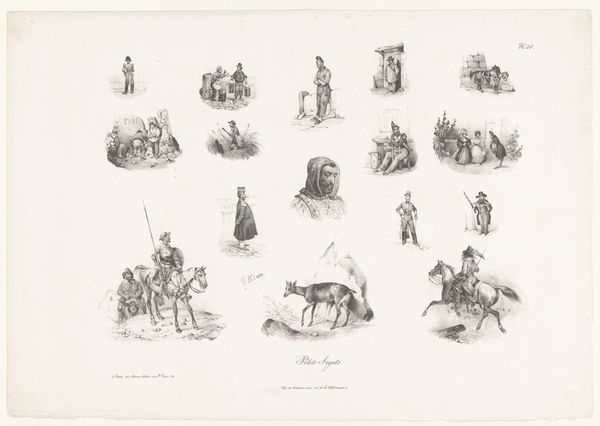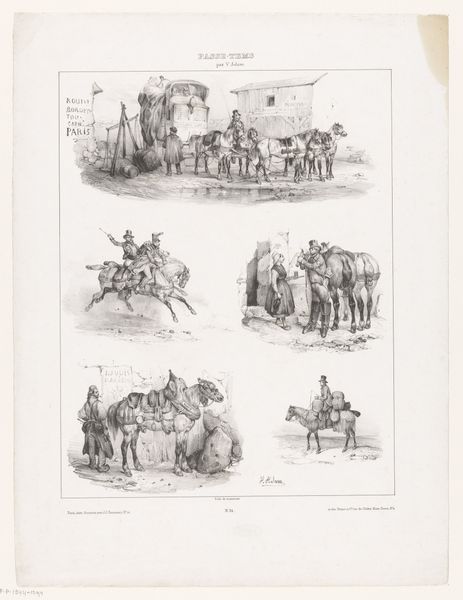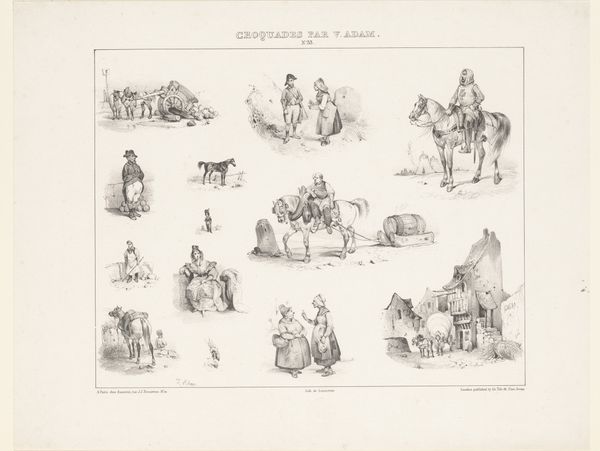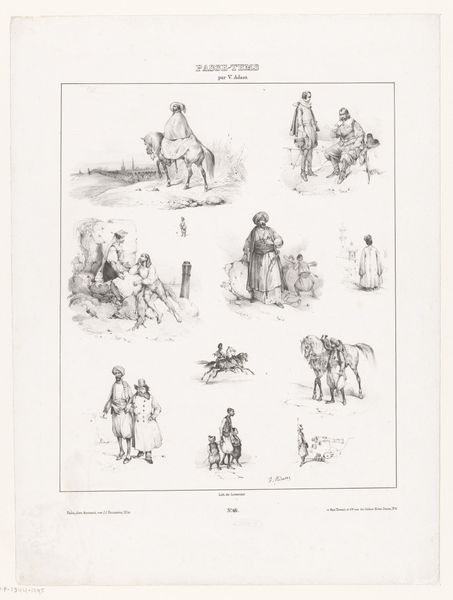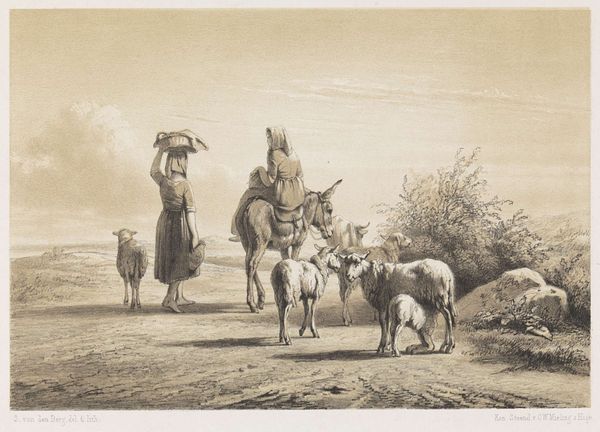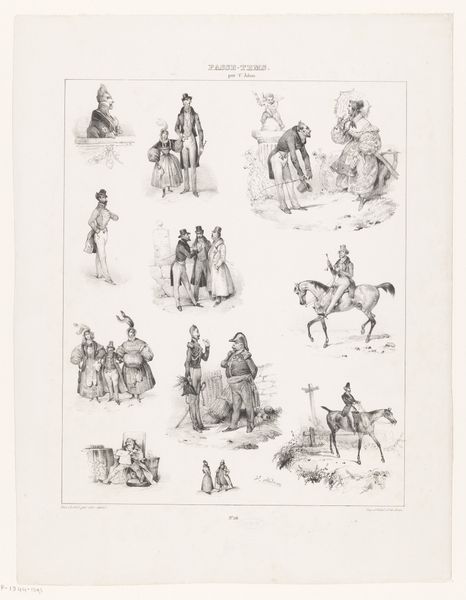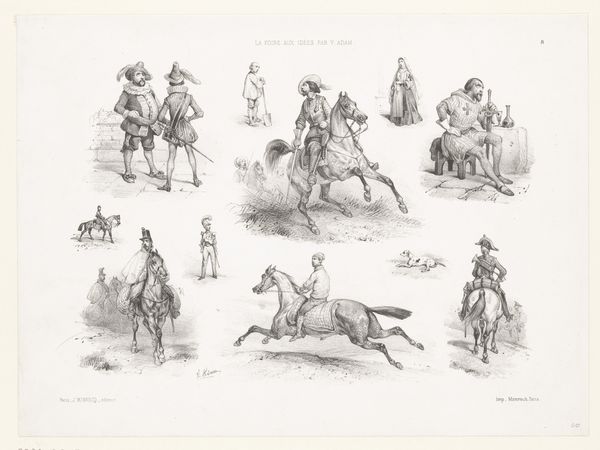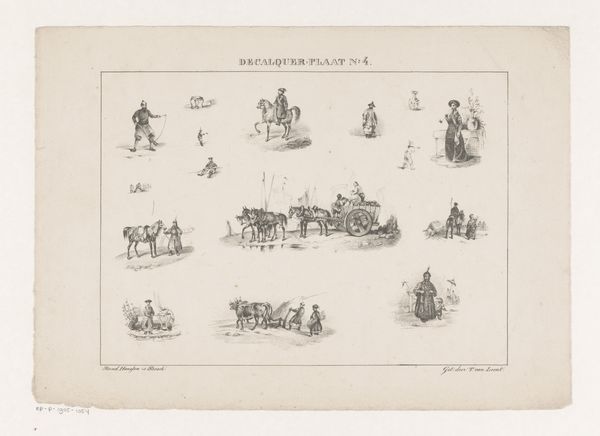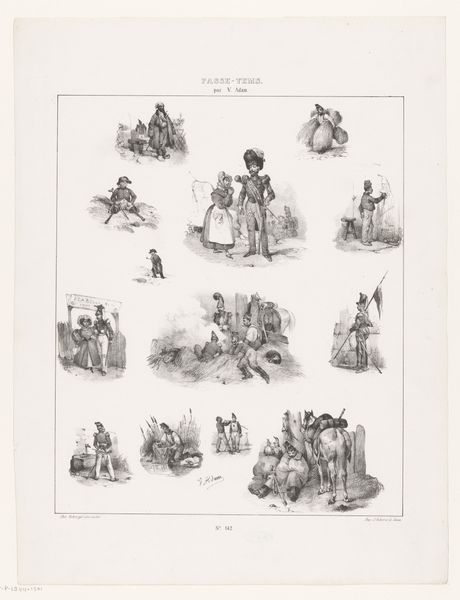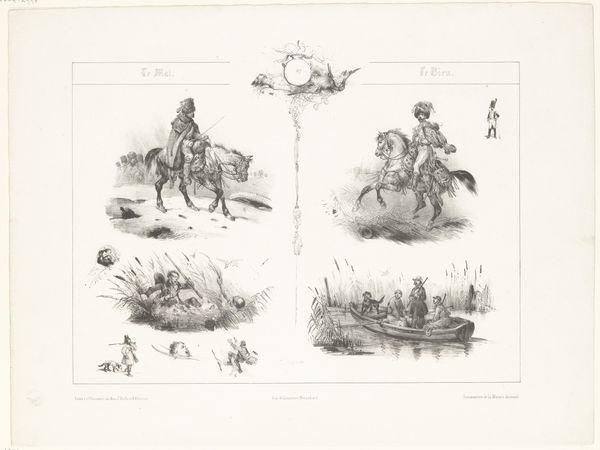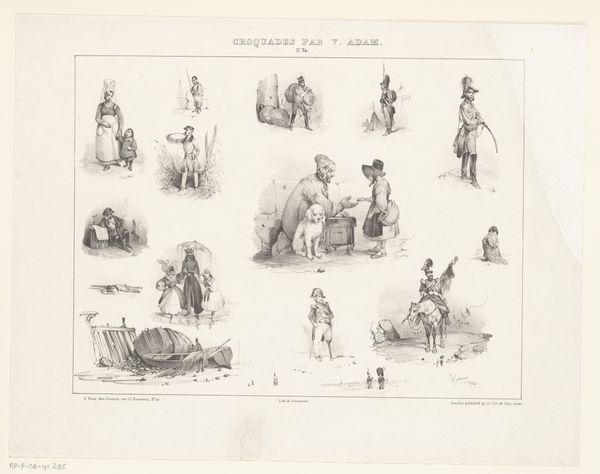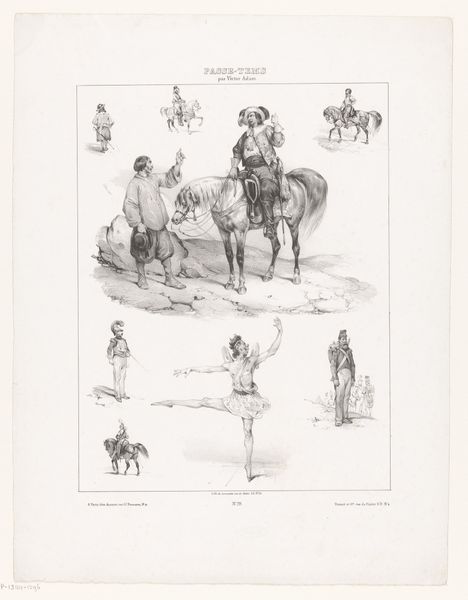
Acht voorstellingen van mensen en dieren in een landelijke omgeving 1841
0:00
0:00
victoradam
Rijksmuseum
drawing, print, etching, pencil, engraving
#
drawing
# print
#
pen sketch
#
etching
#
pencil sketch
#
old engraving style
#
landscape
#
romanticism
#
pencil
#
horse
#
genre-painting
#
engraving
Dimensions: height 294 mm, width 404 mm
Copyright: Rijks Museum: Open Domain
Curator: Immediately, there’s a charming storybook quality. All of these little scenes feel incredibly intimate. Editor: You've noticed the overarching gentleness about it. What you're looking at here is a print called "Acht voorstellingen van mensen en dieren in een landelijke omgeving," which translates to "Eight scenes of people and animals in a rural setting." It was created in 1841 by Victor Adam. Curator: Adam's interest in encapsulating these idyllic, almost sentimental slices of life is so clearly defined through these figures. Is that a reference to earlier emblem books perhaps? It calls to mind the symbolic representation of virtues or concepts, albeit through everyday encounters rather than abstract ideas. Editor: I think that's perceptive. In Romanticism, we see a longing for simpler times and an idealized past. The visual language speaks volumes— notice the careful etching, lending a soft focus even to ordinary tasks and interactions. Each vignette appears self-contained, though linked. A milkmaid standing next to a cow, children clustering around an older figure, riders pausing to talk… each echoes and amplifies themes of connection. Curator: These scenes, though pastoral, feel so performative in their display. Even that soldier, the man with the impossibly large hat. What could this uniform represent for the burgeoning idea of nationhood? And why situate the everyday next to power? Editor: The choice of imagery in this work, specifically genre painting alongside political implications, subtly suggests that identity is rooted not just in grand narratives, but in the accumulation of individual, lived experiences. These characters might be going about their daily lives, yet Adam includes markers of empire in their surroundings. The symbolic weight cannot be ignored; these ‘small subjects’ contribute to a bigger sociopolitical tapestry. Curator: It is difficult to ignore the way Adam is capturing memory here too. And thinking of nationhood, what is the value of engraving multiple scenarios, each connected only through medium? It looks to give the viewer a way to see continuity across what might be more different than alike. It’s like Adam anticipated an urge to synthesize. Editor: Absolutely. I initially read this as an innocent and peaceful glimpse into life outside the city. But seeing it now through a historical, maybe even sociological lens makes its resonance for modern audiences so much clearer. It reminds us how art becomes meaningful over time.
Comments
No comments
Be the first to comment and join the conversation on the ultimate creative platform.
